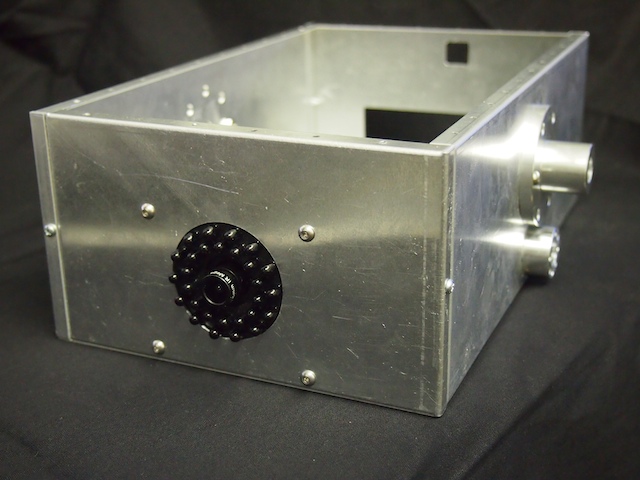
by Camille | Workshop Blog
We are working everyday on the new Mars Rover. The work is going so fast that it’s hard to remember to take pictures, but here are some of the pics we snap along the way.

We cut these hole patterns for the Mars Rover’s Front and Bottom Plates using the CNC.
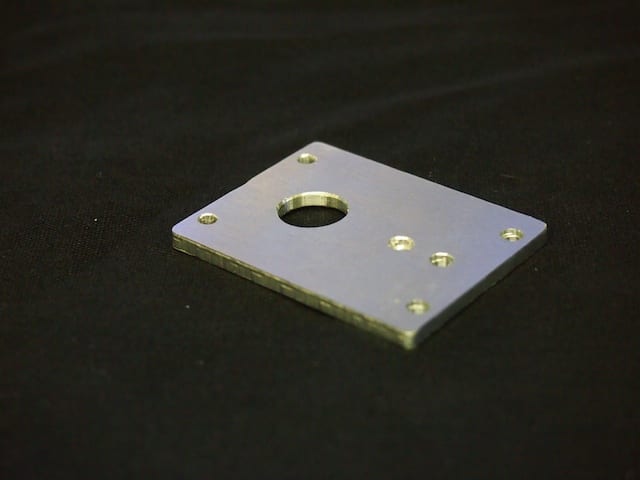
We also used our CNC mill to make this custom Servo Plate for the Mars Rover’s mast. We design all our parts in the SolidWorks CAD system.
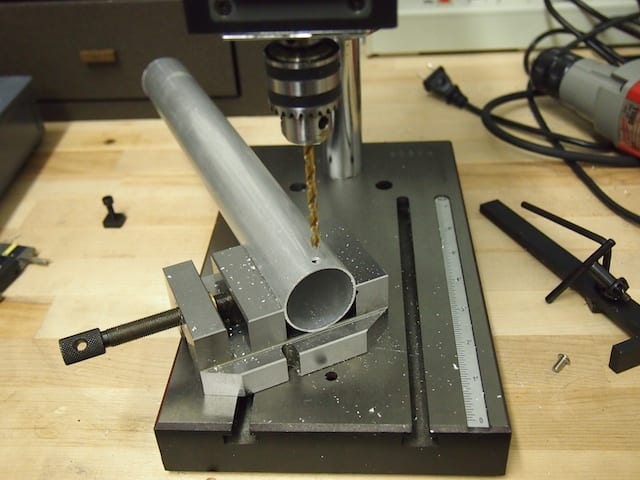
There are also times when we need to do it the old fashioned way. Here we are drilling a bracket hole in the Mars Rover mast, which is a 1.5″ aluminum hollow tube.
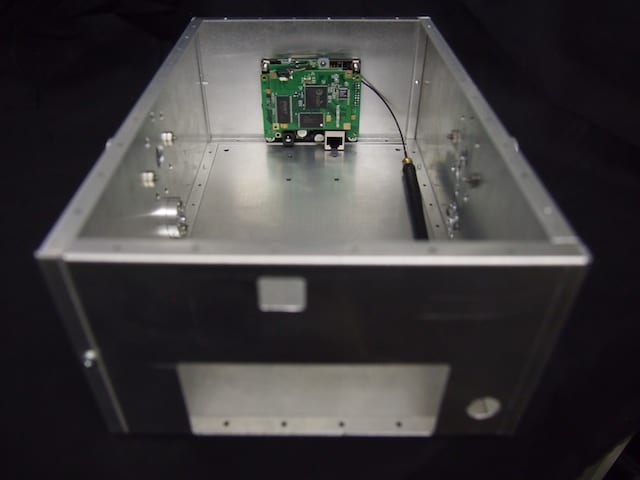
Here is the inside of the assembled Mars Rover box with the camera mounted in the front panel.

Here is the assembled Mars Rover box showing the camera mounted on the front panel. The black protrusions are IR LEDs for night vision capability.
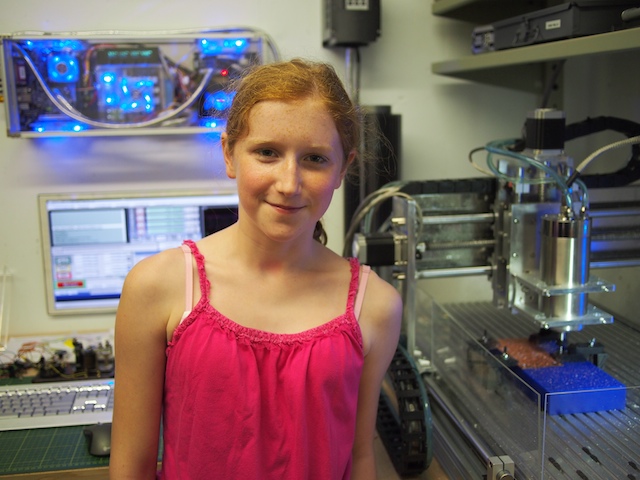
by Camille | Non-Robot Projects, Tools and Workshop, Workshop Blog
Today, we worked on the wireless telegraph project. We decided to mount the electronics on brass and copper plates, so we designed the parts on the CAD system and then machined the parts on our home made CNC mill (one of our many projects over the last year). Using the CNC to make project parts was a really cool use of what has become our favorite tool. Here are some pics of the CNC.
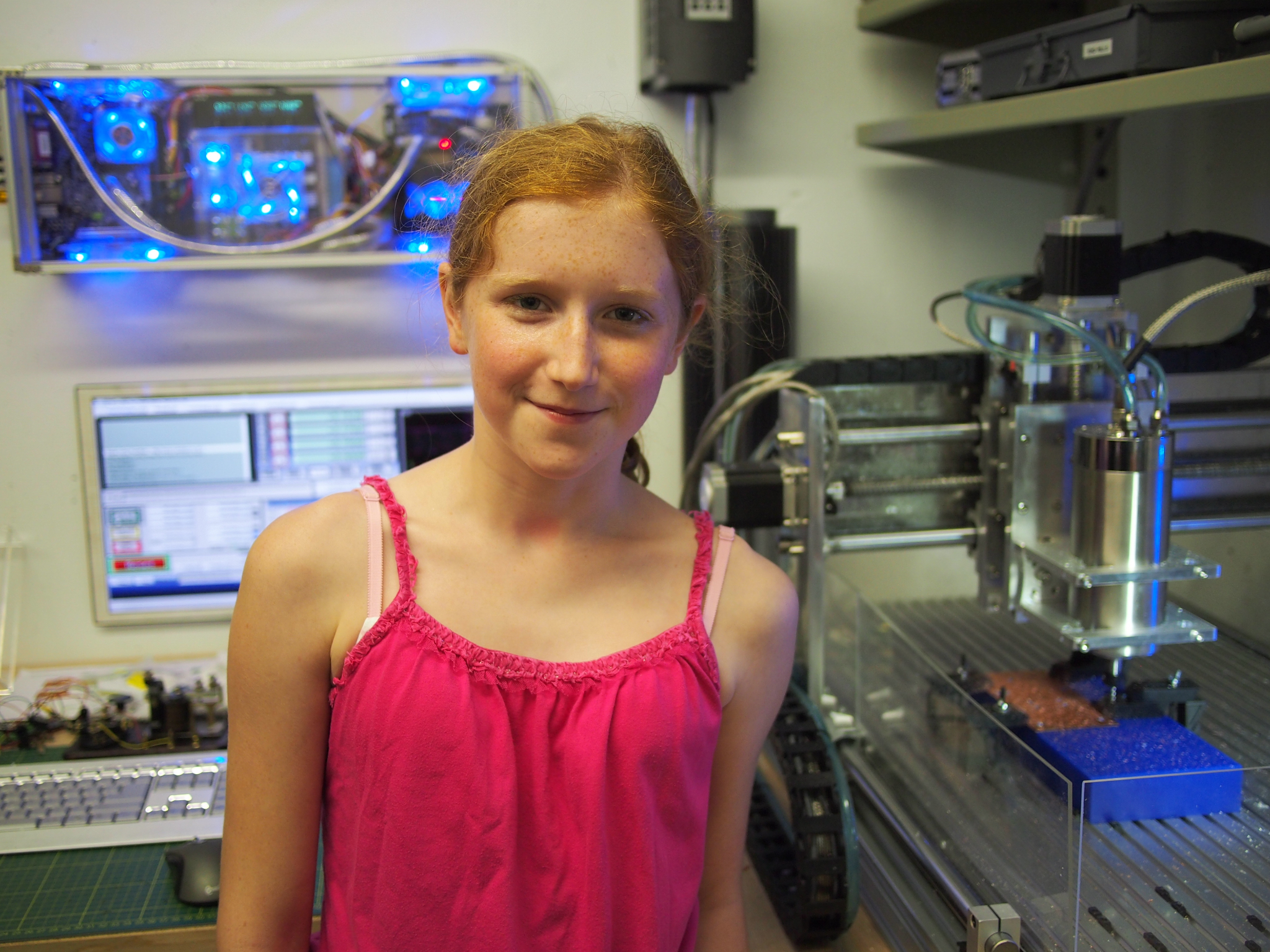
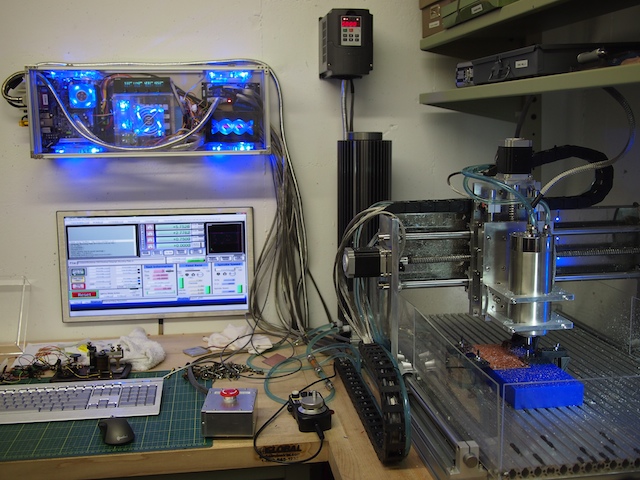
Here is our CNC mill just after machining the copper telegraph base plate. Top left: the computer and electronics box we built. Top center: Cooling tower for the water-cooled spindle. Top right: The 3-phase Variable Frequency Drive (VFD), which powers the 24,000 rpm spindle, is mounted on the wall. Mounted on the wall just below the computer box: an LCD panel for the CNC user interface. Right hand side: The stepper-motor-driven CNC machinery, which is made out of steel and aluminum. You can see the copper part on the blue riser (which is machinable wax). Front center: the system’s keyboard, the emergency stop button box we built, and the jog box (for moving the CNC manually).
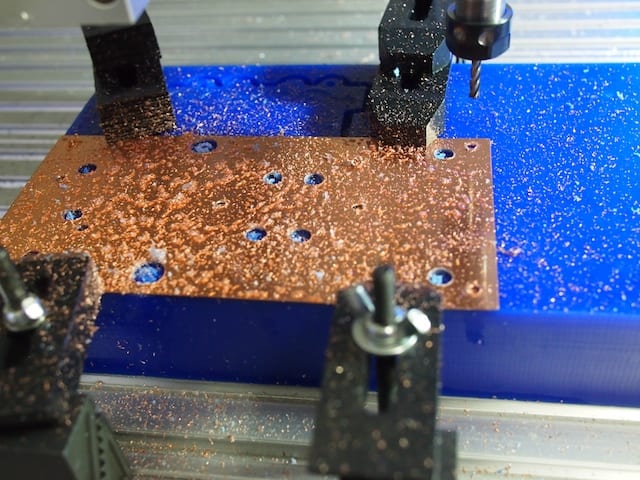
A close up of the copper base plate just after it has been machine by the CNC.
Camille showing off her new copper base plate, fresh out of the CNC

We needed two of the base plates (one for each side of the telegraph system), so we machined the second one out of brass instead of copper (using the same CNC file).
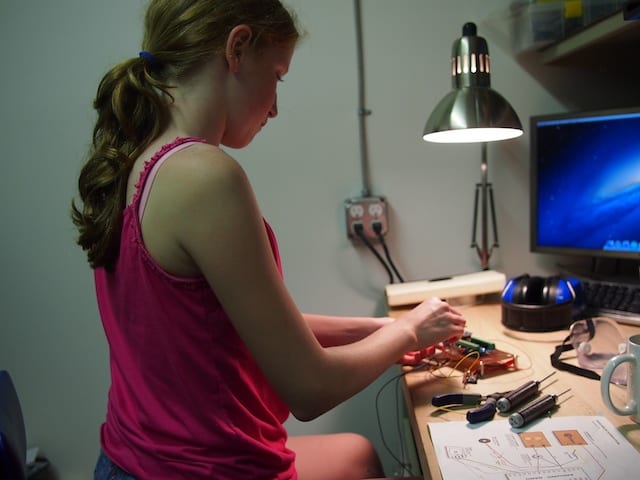
Here Camille assembles the telegraph electronics onto the baseplate
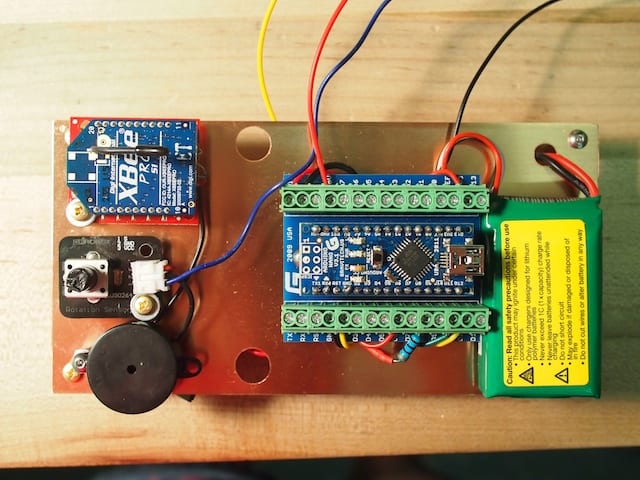
Here are the electronics for the telegraph system mounted on the copper plate. The electronics shown here include an Arduino Nano in a screw terminal board, a 7.4v Lithium Polymer Battery, an Xbee Radio, a potentiometer (for tuning the voltage to the Telegraph Sounder), and a small speaker). This copper plate will be mounted inside the base of the telegraph system.

by Camille | Non-Robot Projects, Tools and Workshop, Workshop Blog
Up to this time, we’ve been using hand tools to build our robots. But over the last few months, we’ve been working on building a Computer Numerical Control Machine (CNC) that will allow us to precisely cut, drill, and machine aluminum, brass, plastic, wood, and other materials.
Part of this project is to design and build a custom electronics enclosure that will be a combination computer / CNC / motor control system. This will be the “brain” of the CNC. After trying a few different approaches, we decided to build the box from scratch out of 1/8″ acrylic sheet and Microrax, with are tiny, 10mm 80/20 aluminum beams. The enclosure is about 22″ long, 12″ wide, and 8″ deep. The beauty of Microrax is that we could easily cut the beams to the size we wanted and then use small machine screws and brackets to bolt them together. This allowed us to not only construct the overall enclosure, but to bracket the four cooling fans into place, frame the I/O ports, and add an acrylic lid with hinges. MicroRax is very flexible and cool stuff that I look forward to using for future projects, not only for enclosures, but robots as well.

CNC Electronics Enclosure
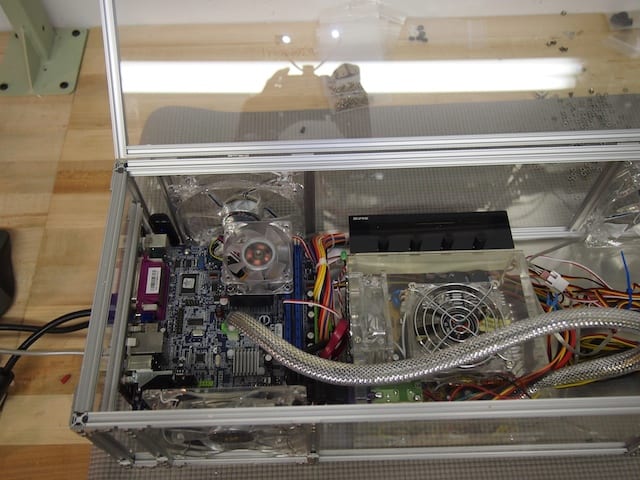
On the left side of the enclosure we mounted a mini-ITX motherboard, a small SSD hard drive (not visible in this picture because it’s under the motherboard), the RAM (blue), an internal USB hub, ports for communication with the motor controller, and various other computer components. In the center of the enclosure we installed the main power supply (clear) and the fan control system (black). The right side of the enclosure will contain the motor control boards and other CNC-specific components (which we haven’t installed yet).

There are four main enclosure fans (two on the top and two on the bottom) and four smaller internal fans.

Here is the CNC Electronics Enclosure in the workshop, along with the screen, keyboard, and mouse. We will most likely be mounting the enclosure on the wall so that the lower two fans are more effective.[/caption]
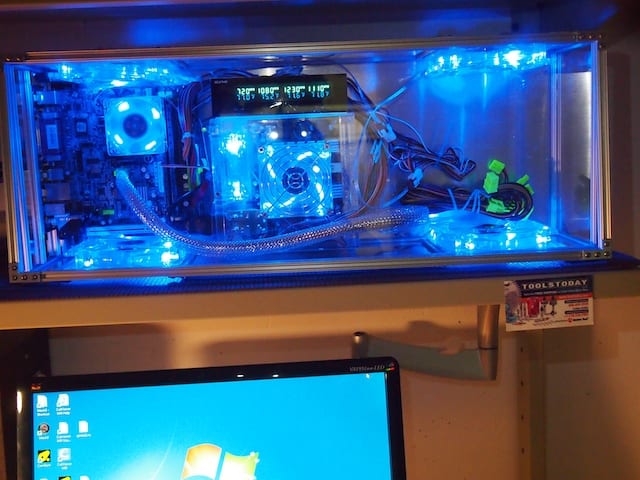
In this close-up, you can see that the fan control system displays the rpm speed of each fan and allows you to adjust it. It also displays the temperature of the corresponding sensor. We’ve attached the sensors to the microprocessor heat sink, the RAM, the motor controllers, and other critical components.[/caption]

Here are various parts for the CNC that we’ve been working on, including the CNC’s aluminum T-Slot table, various fixtures, the largest of the three interchangeable spindles the CNC will use (for 1/4-inch end mills), and a block of blue machinable wax.
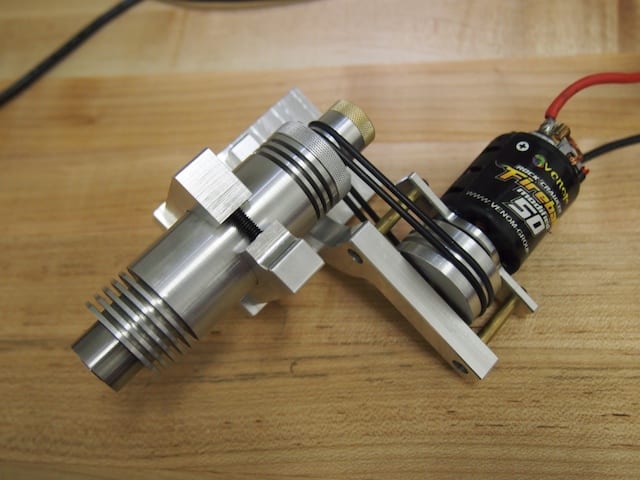
Here is a close up of the smallest spindle the CNC will use. This is a high-precision 1/8-inch spindle for delicate work. It will be driven at a spindle speed of 25,000 rpm by the brushed motor via the two black belts, which in turn will be controlled by the motor controller, which in turn will be controlled by the CNC software running on the computer. At least theoretically! Keep your fingers crossed! :)[/caption]



















